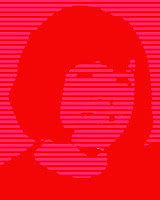The practical one is Designing and Printing Textiles by June Fish. Practical instruction which is enabling and encouraging.
The other three books are
Push Stitchery curated by Jamie Chalmers. It shows the work of 30 textile artists which 'explore the boundaries of stitched art'.
Mark Making by Tilleke Schwarz. Showing her freestyle embroideries.
Radical Thread by Lesley Millar. It celebrates the 50th anniversary of the 62 Group 'at the forefront of innovation and creativity'. I love the features on the individual artists - many of whom are not young and indeed some are older than me! Inspirational on many fronts. Many of the artists describe the simple pleasure of stitching - which is what I love too - and these three books invite me to be braver with my designs.
Why do people keep asking me 'What are you going to do when you finish?' What they are really saying is 'It is pointless you are too old'. Anyway, I have decided to answer 'I am enjoying myself now and that is all that counts'.

Enough of the ranting. Inspired by by 'no holds barred' books I have made a collage of all my 1960s samples - comprising stitch, screenprint and transfer - the include newspaper headlines, a poem. song lyrics and a speech. They represent the music, politics, flower power and poetry of the era.
I want to hand stitch it together to unite it all but it would take a long time. I prefer handstitch, it has faults and differences and textures. Machine stitch can be harsh and sterile.
 I spent a lot of time deciding on the position and aspect of the images - I decided to have the face them all the same way because it is a collage first and, maybe, a tablecloth second.
I spent a lot of time deciding on the position and aspect of the images - I decided to have the face them all the same way because it is a collage first and, maybe, a tablecloth second.I also tried a product called 'Image Maker' by Dylon. It transfers images from photocopies to fabric. I'll try again but my first attempt made the cotton textile stiff and the image was unclear.

































